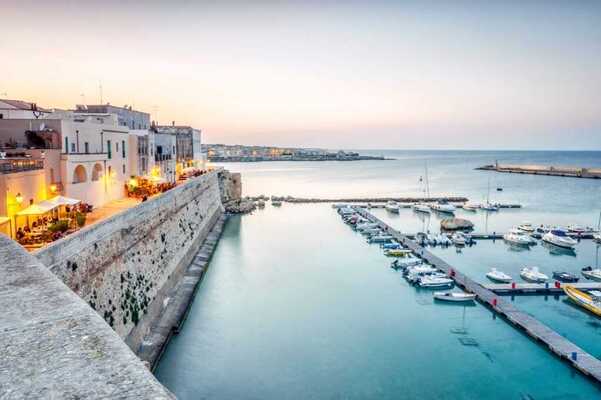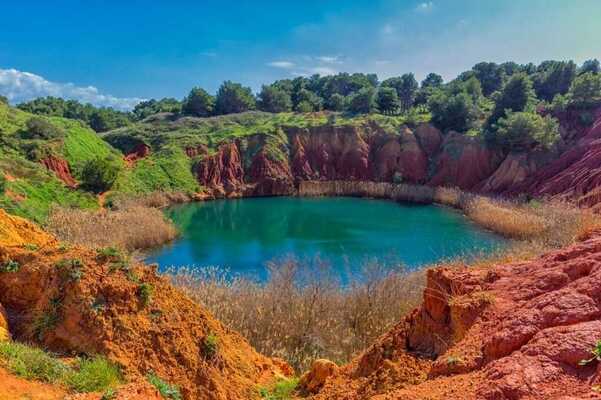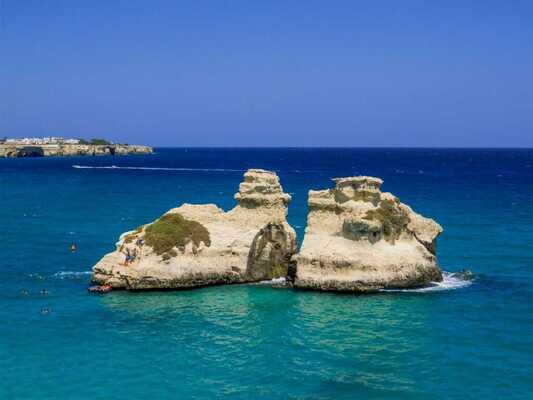Punta Palascia: useful information
Punta Palascia or Capo d’Otranto, an unmissable location in the province of Lecce, is the easternmost point in Italy where you can admire the suggestive lighthouse. The lighthouse was built in 1867 and then replaced by a solar-powered light located at the headquarters of the Navy. Here, on December 31st many young people meet to await the first dawn of the new year, a symbol of good omen, during the “Dawn of the People” event.
The European Community has declared this lighthouse among the five most important in the Mediterranean. This nomination has redeveloped it, making it a destination for many tourists. In fact, many stop right here to admire the sunset and take wonderful photos.
In fact, there are many professional or amateur photographers who, enchanted by the beauty of the scenery, never miss the opportunity to take shots.
A scenography much appreciated also by the world of cinema, in fact the lighthouse appeared in the “Mine Vaganti” movie and in the TV-series “Braccialetti rossi 2″.

History of the Lighthouse
The name Palascia perhaps derives from Panagia, the Virgin venerated in a rock church. Until the 19th century, near the lighthouse, there stood a medieval watchtower from which possible incursions by Turkish pirates could be monitored. Between 1700 and 1800 the tower was no longer used and this, together with the wear and tear of time, reduced it to a wreck. Today nothing remains of the old carparo structure. The current lighthouse, however, was built in 1867, positioned lower than the watchtower.
Until the 1960s the lighthouse was powered by oil but then, with the arrival of electricity, rooms were built inside it for the families of the lighthouse keepers. Now it is powered by a solar cell instead.
What to see in Punta Palascia
From the terrace of the lighthouse, anyone will be left breathless by the spectacle that will appear before their eyes: the meeting between the Ionian Sea and the Adriatic Sea and, on clear days and good weather, even the coasts of Albania. The lighthouse also represents the access point to an unmissable path for all archeology lovers, namely the “Grotta dei Cervi” (Deer Cave). Inside the cave, traces of art from the Paleolithic era have been discovered. It is a point particularly popular with trekking and nature walks enthusiasts, among the colors and scents of the Mediterranean scrub.
A short distance from the lighthouse is the Multimedia Museum of the Sea with multimedia stations that allow visitors to learn news about nature, the marine environment, the fauna and flora of the province of Lecce.
How to reach Punta Palascia
If you stay in Otranto, you can reach Punta Palascia with one of the city buses (in about 13 minutes) or use the taxi service. In fact, the lighthouse is only 3 km from the city.
To reach it by car, just proceed along the SP87 provincial road which from Otranto leads to Santa Cesarea Terme.

Otranto: the easternmost town in Italy
Otranto located on the Adriatic coast, is the easternmost municipality in Italy, where it is said there is the separation point between the Adriatic Sea and the Ionian Sea, almost a bridge between East and West.

Otranto Bauxite Quarry
Another example of industrial archeology in Salento is the Bauxite quarry in Otranto, built in the early 1940s, thanks to the chance discovery of a mineral. Located near the Punta Palascia lighthouse, this deposit, now abandoned in 1976 due to high extraction costs, represents one of the most visited places in Salento.

Torre dell’Orso
Torre dell'Orso is a seaside resort in the Melendugno marina, characterized by sandy beaches and crystal clear sea that will please all swimmers.
